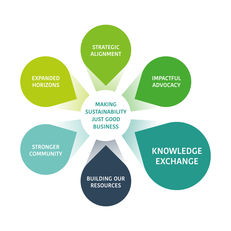EAUC commissioned the research paper ‘Next Generation Sustainability Strategy and Structure’ to help members understand the current sustainability landscape in tertiary education.
This case study is from University of Manchester
Structure: Decentralised
Highest level of authority: Executive Level
Web: http://www.socialresponsibility.manchester.ac.uk/
Sustainability is incorporated within social responsibility, one of three core strategic goals at the University of Manchester. The Office of Social Responsibility is headed by the Associate Vice President for Social Responsibility, who is supported by a small team. The office focuses on developing strategy and ensuring its delivery across all areas of the university. A decentralised environmental sustainability team, also reporting to the Associate Vice President for Social Responsibility, sits within estates. There is an academic lead for environmental sustainability who works closely with the Office of Social Responsibility to link academic work on sustainability with estates oriented work, as well as helping to embed sustainability within the curriculum. The budget is embedded within the decentralised areas in which work is carried out.
As well as featuring prominently in the corporate strategy, there is an independent social responsibility strategy, with environmental sustainability feeding through four key themes. There are a number of performance indicators relating to sustainability, as well as one KPI.
Associate Vice President for Social Responsibility James Thompson explains that while a single central delivery team encompassing both social responsibility and environmental sustainability might be the set-up he would opt for out of choice, this is not a practical option at the University of Manchester. The decentralised approach has been influenced by the previous structure that it has evolved from, and the size of the University (currently the 5th largest university in the UK).






 Except where otherwise stated, content on this site is
licensed under a Creative Commons Attribution 3.0 License.
Except where otherwise stated, content on this site is
licensed under a Creative Commons Attribution 3.0 License.
